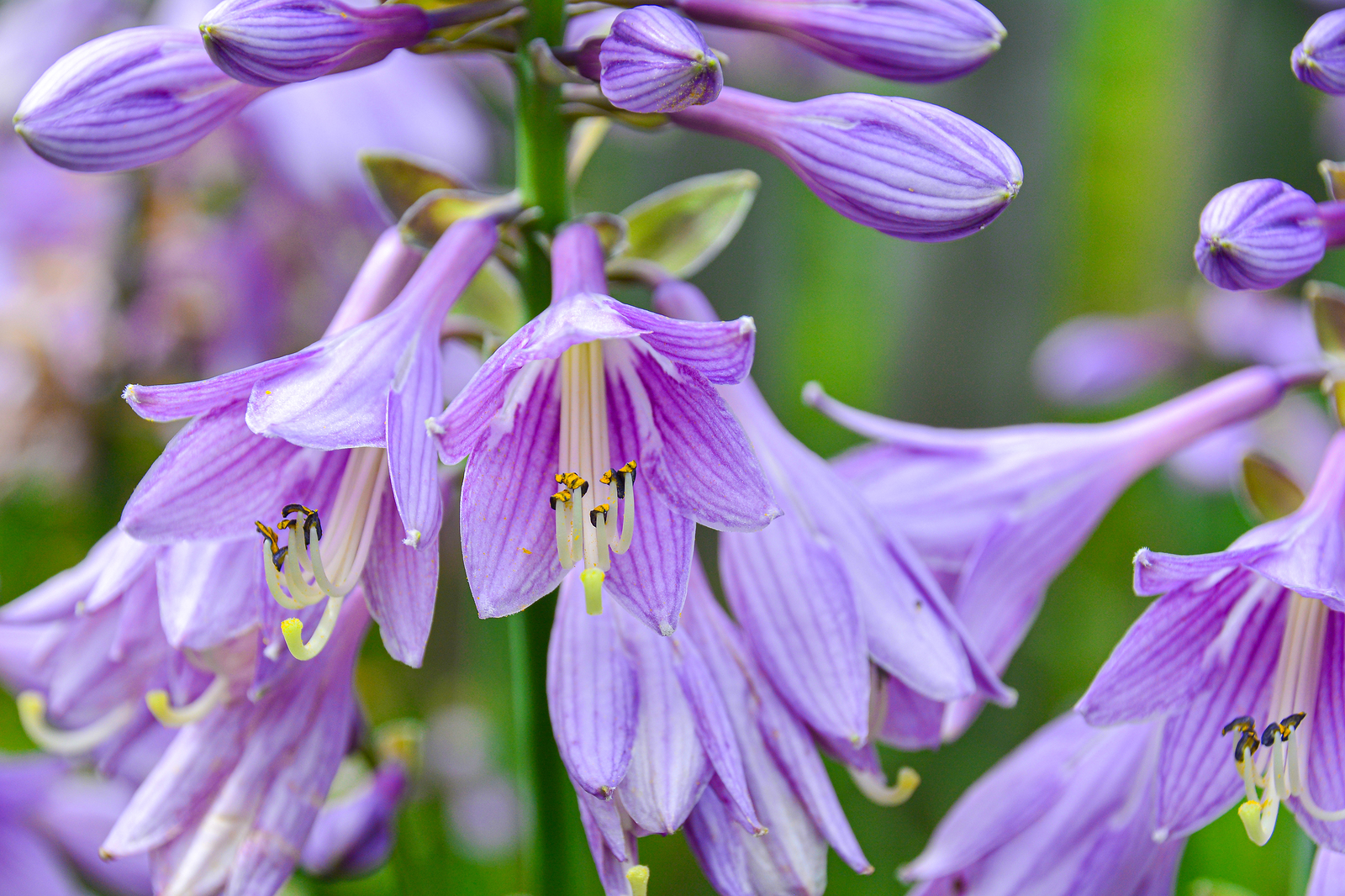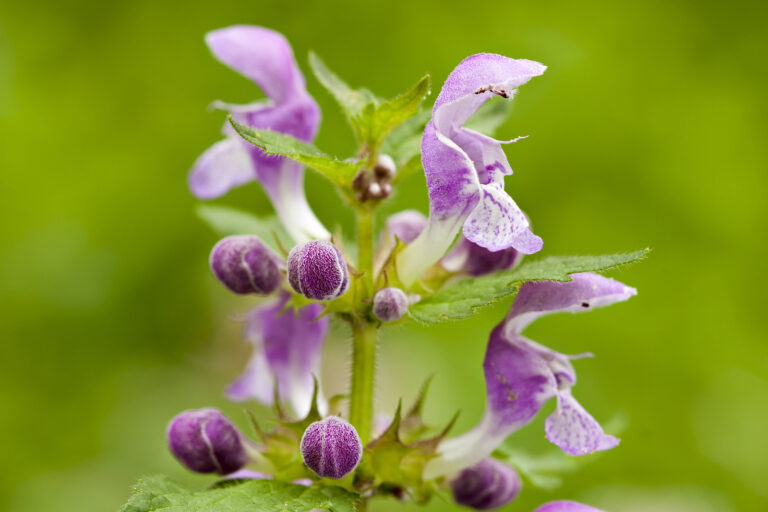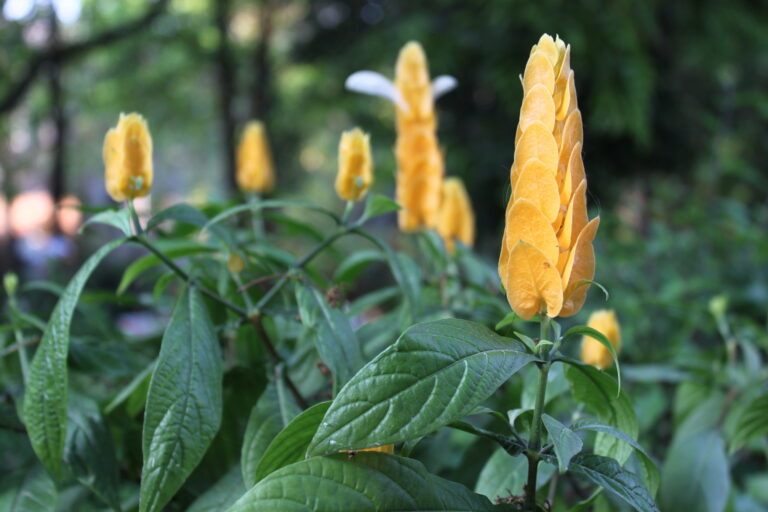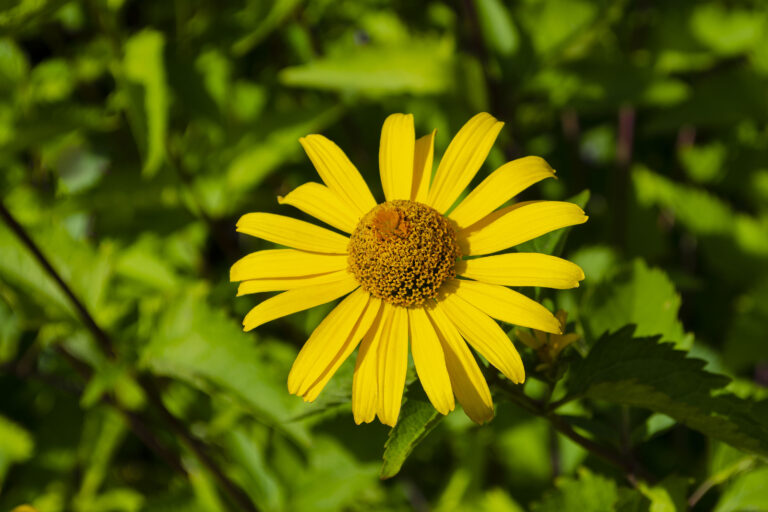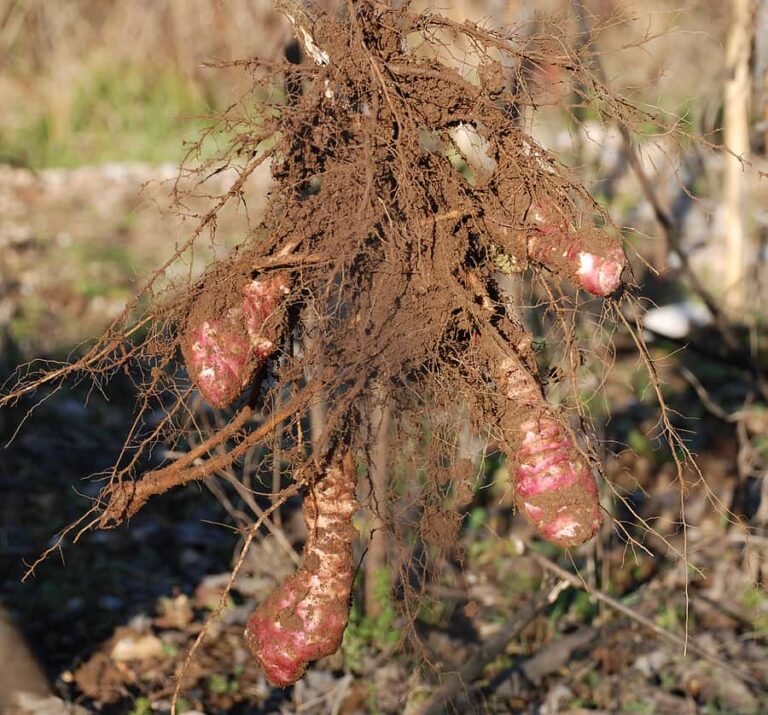How to Grow and Care for Hosta
Hostas are large-leaved plants that add texture and color to the front of shady beds and borders. Spikes of blue, lavender, or white trumpet-shaped flowers rise above mounds of leaves. Leaves may be heart-shaped, lance-shaped, oval, or nearly round. Foliage runs from lime to dark green, greenish-gold, gray, and blue with many variegated forms.
Most hostas love the shade, but some can tolerate the sun. Plants grown in sun will be more compact and produce more flowers. Hostas go dormant in winter in all regions; the leafy tops all but disappear.
Garden Success Products at Amazon:
- 10 pcs Stainless Steel Garden Hand Tool Set
- Flexi Hose with 8-inch Nozzle
- Gorilla Cart 4 Cu. Ft, 300-pound Capacity
- Neem Bliss 100-% Cold Pressed Neem Oil
- Safer Brand Insect Killing Soap
- Wildflower Seed Mix Attracts Hummingbirds and Butterflies
- Eden Brothers All Perennial Seed Mix
There are 70 species of hosta and hundreds of cultivars. Flowering time varies from late spring to fall depending on the variety.
Use hostas as edging for shady borders or beneath tall trees and shrubs that cast shadows. Hostas tolerate moist soil and can be planted near streams and ponds.
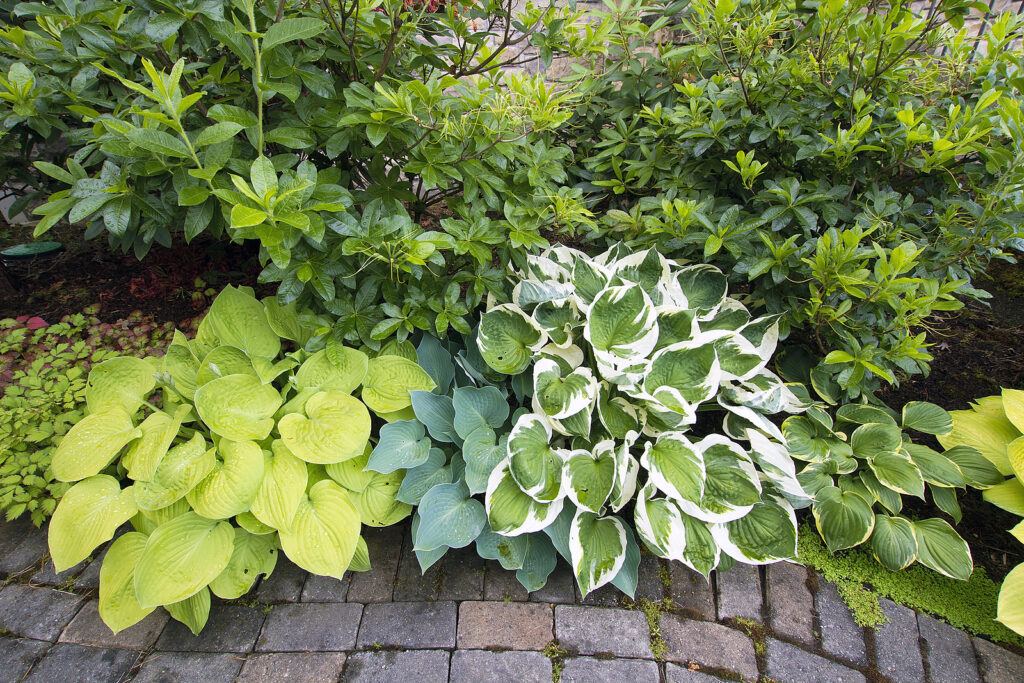
Get to know Hosta
- Plant type: Perennial
- Growing zones and range: Zones 3 to 9
- Hardiness: -35°F (-37°C)
- Height and width: 3 to 48 inches (7.6-106cm) tall and wide depending on the variety
- Foliage: Lush mounds of leaves that can be heart-shaped, nearly round, or lance-shaped from 1 inch to 12 inches (30cm) long or more; leaves can be solid dark to mid-green, chartreuse, blue-green, blue-gray, or variegated; leaf texture can be smooth or ribbed or deeply corrugated.
- Flowers: Spikes of trumpet-shaped flowers that are 1 to 2 inches long borne of erect spikes.
- Flower colors: Blue, lavender, or white
- Bloom time: Late spring to fall depending on the variety
- Uses: Shade garden, beds and borders, natural areas, shady courtyards, entries, and patio areas; hostas do well in moist areas, along stream banks, bogs, and ponds–but not planted in the water.
- Common name: Hosta, plantain lily
- Botanical name: Hosta spp.
- Family: Liliaceae
- Origin: Woodlands and meadows of China, Korea, and Japan
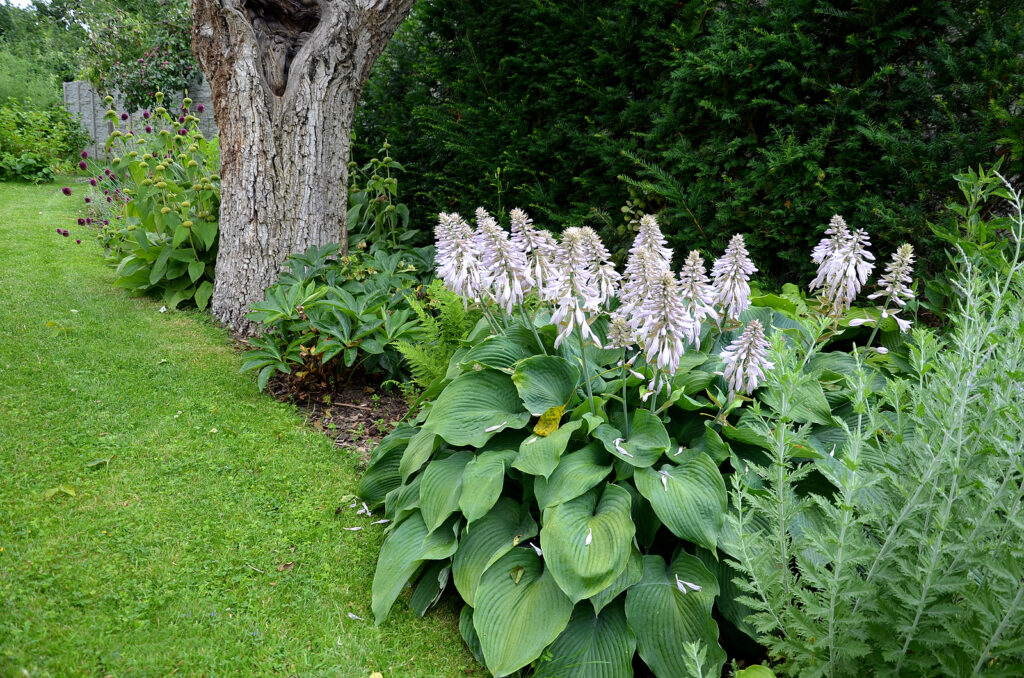
Where to plant Hosta
- Plant hostas in partial shade; plant in full shade in hot summer regions. In general, the more yellow in the foliage, the more sun the variety will tolerate.
- Grow hostas in humus-rich, well-drained soil. Mix compost and mulch around hostas each spring.
- A spot with a few hours of morning sun and shade for the rest of the day is good. Blue-leaved cultivars retain their color in shade; golden-leaved cultivars tolerate more sun but still do best in partial shade.
Hosta uses and companions
- Plant Hosta in groups and as specimens in shade and woodland gardens.
- Use dwarf varieties as edging or border plantings in formal and informal gardens; use large types as speciens.
- Good garden companions for Hosta include Alchemilla mollis, Anemone hybrida, Astilbe, Campanula, Dicentra, Polygonatum, Thalictrum.

When to plant Hosta
- Set hostas outdoors in spring in cold winter regions; set container-grown plants out in autumn in mild to cool winter regions.
- Divide plants in spring or fall and replant divisions immediately.
Planting and spacing Hosta
- Space hostas 10 to 24 inches (25-61cm) apart or more depending on the variety.
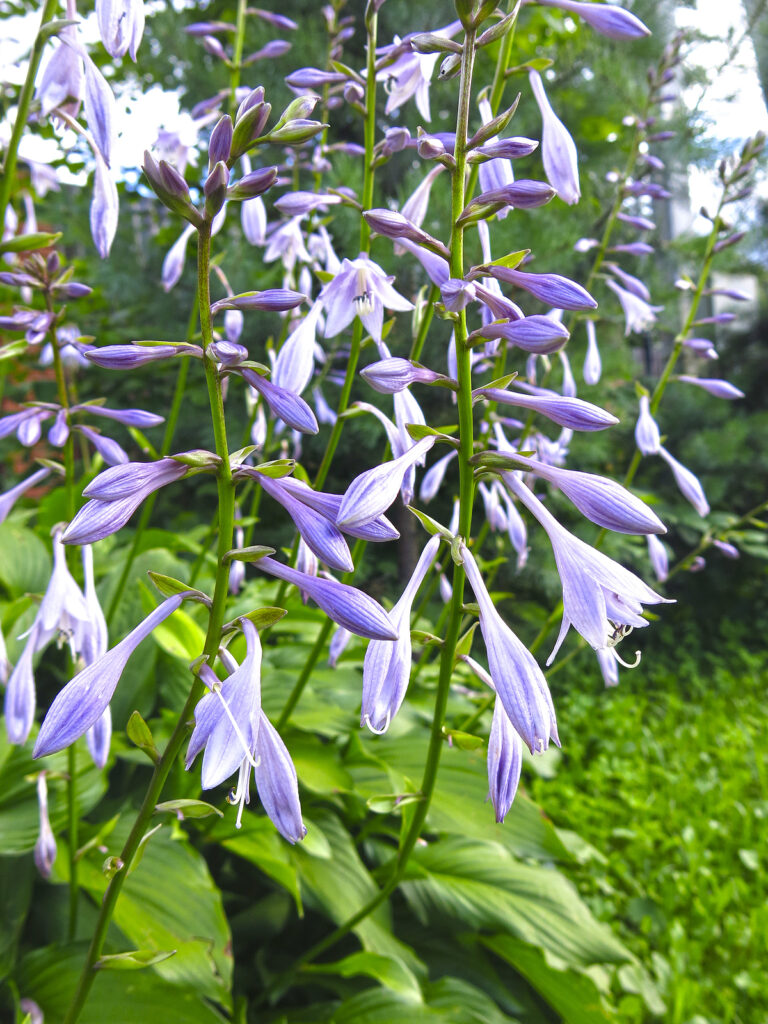
How to water and feed Hosta
- Keep the soil evenly moist; in dry weather give hostas extra water.
- Fertilize hostas every 6 weeks with an all-purpose fertilizer or work a slow-release fertilizer into the soil in spring.
Hosta care
- Mulch around hostas in spring after the soil has warmed; mulch again in autumn.
- Trim spent flower stalks for a neater appearance.
- Divide plants that begin to fade in the center. Divisions can take a year or two to flower again.
- Hostas are susceptible to attack by slugs and snails.
- Mark the locations of hostas that die back in autumn.

Hosta propagation
- Hosta seeds germinate in 7 to 14 days at about 70°F (21°C).
- Hosta cultivars do not grow true from seed.
- Divide clumps in spring before the leaves unfurl and begin to grow. Divisions can take a year to two to flower again.
- Dig plants from the edge of an existing clump by severing it with a sharp spade.

Hosta varieties to grow
There are hundreds of host varieties, but they will self-sow if you do not remove flower stalks.
- Hosta crispula, curled-leaf hosta: Mounds to 18 inches (45cm) tall; dark green leaves with uneven margins; lavender flowers early in the season.
- H. fortunei: Hybrid is known for its many selections in a wide range of colors; plants grow to 18 inches tall with oval leaves; lilac flowers.
- H. hybrid: ‘Blue Angel’ has oval, bluish-green leaves and grows 36 inches (91cm) tall and 48 inches (120cm) wide.
- H. hybrid: ‘Blue Moon’ has blue-green leaves and grows just 4 inches tall and 12 inches (30cm) wide.
- H. hybrid: ‘Diamond Tiara’ has thin, wavy, olive-green leaves splashed with gray-green and edged with creamy white.
- H. hybrid: ‘Frances Williams’ has heart-shaped, puckered blue-green leaves with yellowish margins.
- H. hybrid: ‘Golden Prayers’ has deep yellow, slightly puckered leaves.
- H. hybrid: ‘Kabitan’ has lance-shaped, bright yellow leaves edged with green.
- H. hybrid: ‘Ryan’s Big One’ has heart-shaped, grayish-blue leaves that are deeply puckered.
- H. hybrid: ‘Sugar and Cream’ has wavy, heart-shaped green leaves edged with cream.
- H. hybrid: ‘Sum and Substance’ grow 3 feet wide and has yellow-green leaves.
- H. lancifolia, narrow leafed plantain lily: Glossy green leaves to 6 inches (15cm) long, bases taper into long stalks; foot-high mounds.
- H. plantaginea, fragrant plantain lily; Glossy green leaves to 10 inches (25cm) long; mounds to 2 feet tall; large, fragrant white flowers.
- H. sieboldiana (H. glauca): Blue-green, broadly heart-shaped leaves to 15 inches (38cm) long; pale blue flower on 30-inch (76cm) spikes,
- H. tardiflora: Small plant to 12 inches (30cm) high; spikes of purple flowers; good sun tolerance.
- H. tokudama: Similar to H. sieboldiana with more crepe-like leaves.
- H. undulata, wavy-leafed plantain lily: Narrow wavy-edged leaves with a creamy white center stripe; cultivar ‘Albo marginata’ has creamy white margins on leaves.
- H. ventricosa (H. caerulea): blue plantain lily; violet-blue flowers; leaves are glossy green; mounds to 24 inches (61cm) tall. Cultivar ‘Variegata’ is edged with creamy white.
Hosta frequently asked questions
Q: What conditions do hostas favor?
A: Hostas do best in good, well-drained soil with plenty of humus. They require partial shade to deep shade, depending on the species. Some hostas can take full sun and can adapt to dry soil.
Q: How should I prepare the ground before planting hostas?
A: Work the soil to a depth of 12 inches adding aged compost or other organic matter such as leaf mold and peat moss. The soil should be moist but well-drained.
Q: Where can I use hostas in the landscape?
A: Use hostas as edging plants, as ground covers, as accents, grouped under trees and shrubs, and in rock gardens. Include hostas in woodland gardens and along streams or near ponds.

